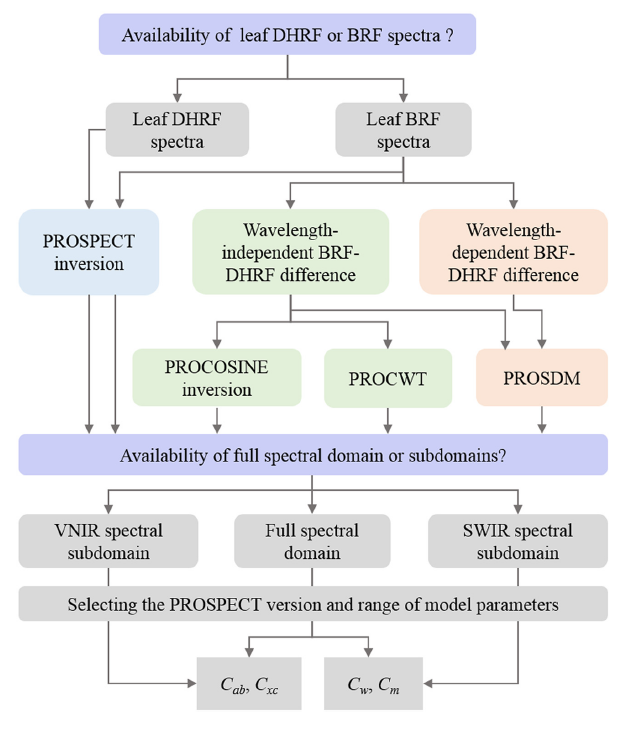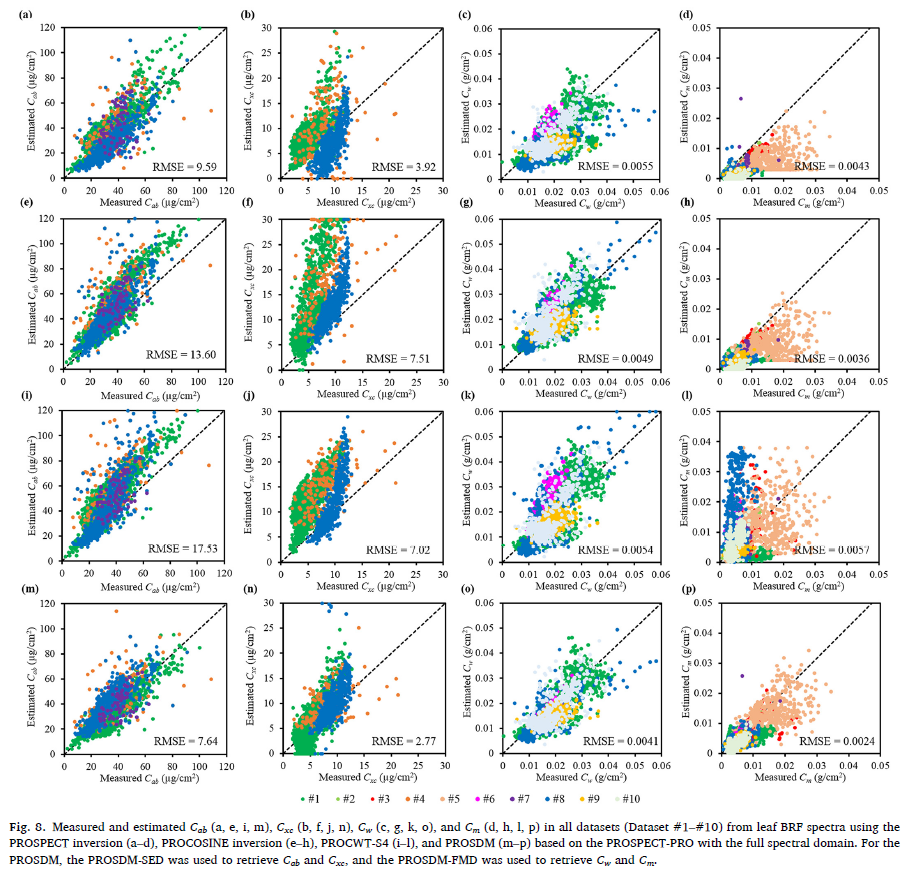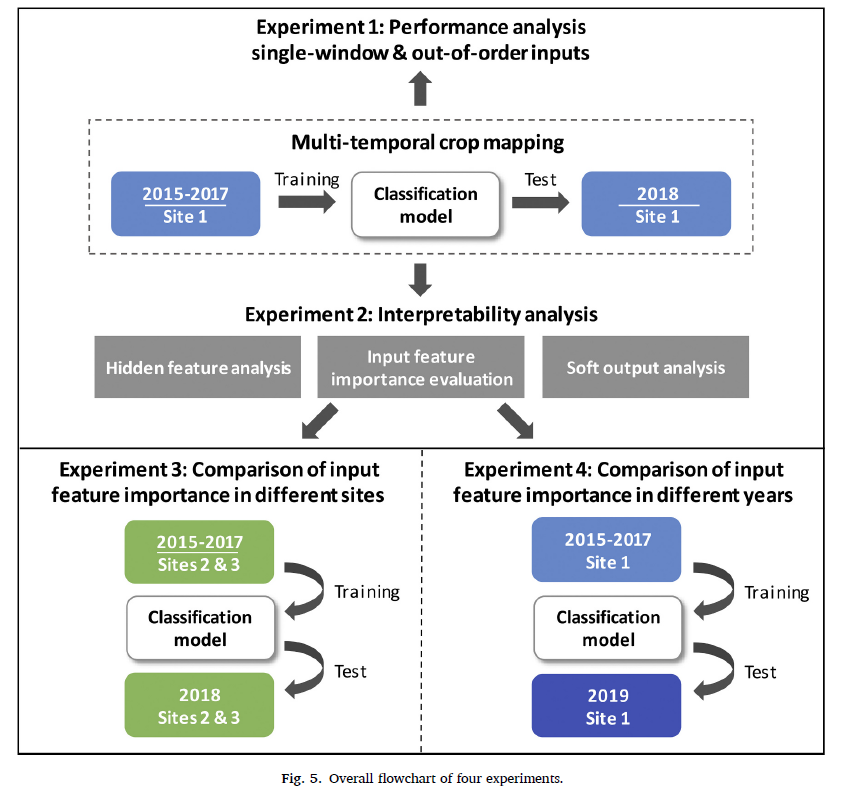Prof.Haiyan Cen's Group Published a Research Paper on Remote Sensing of Environment
Date:2021-10-31 | Visitcount:635In Oct. 2021, Prof. Haiyan Cen's group published a research paper on Remote Sensing of Environment (JCR,Q1), which is one of the top journals in the field of remote sensing, with 5-year impact factor of 11.057, entitled “PROSDM: Applicability of PROSPECT model coupled with spectral derivatives and similarity metrics to retrieve leaf biochemical traits from bidirectional reflectance”.
The PROSPECT model, one of the most popular leaf radiative transfer models, has long been used for retrieving leaf biochemical traits from leaf directional-hemispherical reflectance factor (DHRF) spectra, while remains underexplored for applications to the leaf bidirectional reflectance factor (BRF) spectra to retrieve leaf biochemical traits. Existence of leaf surface reflectance and anisotropic property could be the main issues that constrain the applicability of the PROSPECT inversion to assess leaf biochemical traits from leaf BRF spectra. This study presents an inversion method by integrating the PROSPECT model with spectral derivatives and similarity metrics (SDM), called PROSDM, to remove the difference between leaf BRF and DHRF spectra and retrieve leaf biochemical traits from leaf BRF spectra. Leaf BRF spectra and the corresponding contents of chlorophyll (Cab), carotenoid (Cxc), water (Cw), and dry matter (Cm) were obtained from ten datasets across a wide variety of plant species with varied growth stages, nutrition status, and planting regions. The datasets showed that the significant difference existed between leaf BRF and DHRF spectra, which varied with spectral wavelengths and plant species, and affected the accuracies of retrieving Cab, Cxc, Cw, and Cm. To eliminate the difference between leaf BRF and DHRF spectra independent on wavelengths, spectral derivatives were applied. When the difference between BRF and DHRF spectra varied with wavelengths, spectral derivatives only removed part of the difference, and implementation of the Manhattan distance compensated the limitation of the spectral derivatives to further reduce the difference. As a result, the PROSDM outperformed the PROSPECT and PROCOSINE inversions as well as PROCWT to retrieve Cab, Cxc, Cw, and Cm from leaf BRF spectra with the root mean square errors (RMSEs) of 7.64 μg/cm2, 2.77 μg/cm2, 0.0041 g/cm2, and 0.0024 g/cm2, respectively. Significant improvements in the retrievals of Cab, Cxc, Cw, and Cm were obtained with the RMSEs reduced by 20.33%, 29.34%, 25.45%, and 44.19% compared to the PROSPECT inversion, respectively. It was further found that the model inversions were affected by the spectral saturation, PROSPECT versions, spectral subdomains, and the range of model parameters. The retrieval results by different inversion methods may be improved with the suitable spectral subdomains and range of model parameters. Importantly, the proposed PROSDM showed the great potential to alleviate these negative effects on the retrievals of Cab, Cxc, Cw, and Cm. The performance assessment of PROSDM demonstrates a promising potential for its applications in remote sensing aiming at retrievals of leaf biochemical traits from leaf BRF spectra.



-

The Professor Lin Xingyu team published a cover article on the interna...
23 11 2021 -

Professor Liu Donghong's team won the second prize of national Technol...
08 11 2021 -

Prof.Haiyan Cen's Group Published a Research Paper on Remote Sensing o...
31 10 2021 -

Prof.Tao Lin's Group Published a Research Paper on Remote Sensing of E...
31 07 2021




